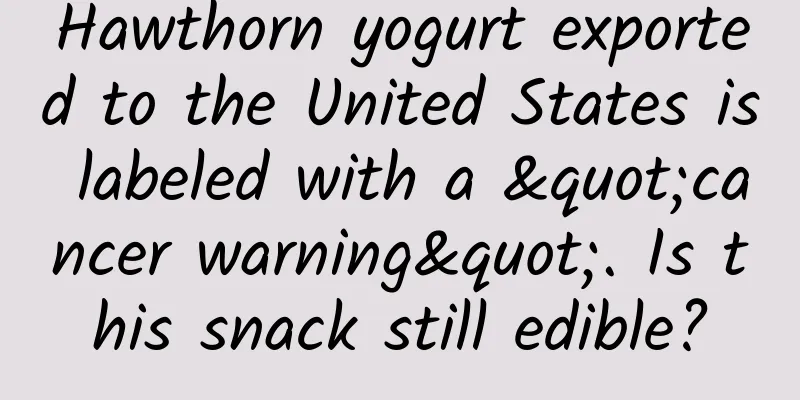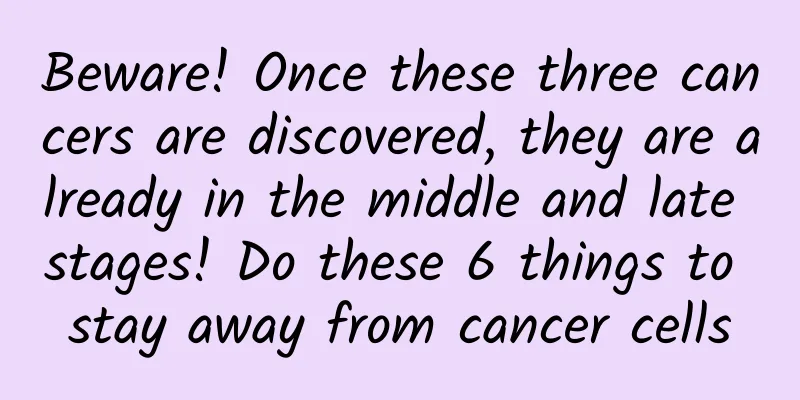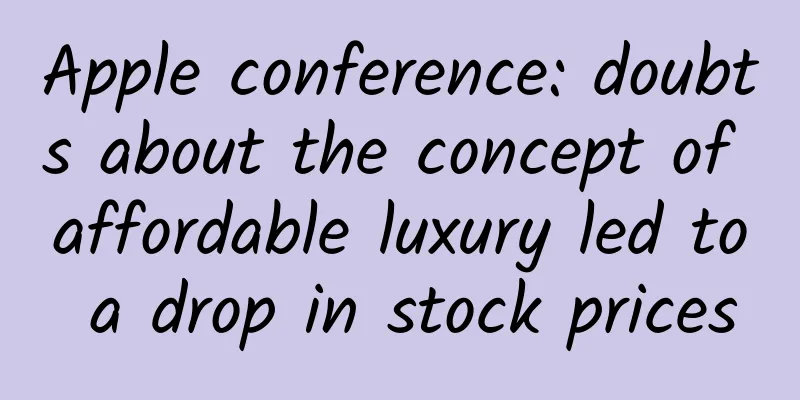Hawthorn yogurt exported to the United States is labeled with a "cancer warning". Is this snack still edible?

|
Recently, in a hotly circulated content, a big "WARNING" was posted on the outer packaging of a certain brand of hawthorn yogurt product, and the words in Chinese and English below were even more horrifying - "Warning: Cancer and damage to the reproductive system"! Image source: Screenshot from a short video platform What kind of "problem" is this snack that warrants a "cancer warning" label? Is this snack still edible? 01 Who posted this warning? Who can require such warning labels to be placed on products? Officials, of course, but only in the state of California, USA . The website that issued the warning is called "Proposition 65". The official name of the bill is the Safe Drinking Water and Toxic Enforcement Act . It is a state law in California . It was created after dangerous pollutants were discovered to contaminate California's water supply more than 30 years ago and was passed by vote in 1986. According to the California Office of Environmental Health Hazard Assessment (OEHHA), Proposition 65 “requires businesses to warn Californians about significant exposures to chemicals that may cause cancer, birth defects, or other reproductive harm.” These "chemicals" have been identified by authoritative organizations including the International Agency for Research on Cancer (IARC, affiliated with the World Health Organization), the U.S. National Toxicology Program (NTP) and the U.S. Environmental Protection Agency (EPA). That is to say, companies must inform consumers of the presence of ingredients in their products that cause cancer or reproductive harm. Today, the scope of this law has expanded far beyond drinking water to include other areas, including food. Products that contain any of the more than 900 toxins or carcinogens mentioned in the proposal will be required to carry a label warning . General warning message on the Proposition 65 website Proposition 65 is designed to enable Californians to “make informed decisions” about their exposure to these chemicals by requiring businesses to provide this information. Some friends may think, isn’t this a good thing? But things are not that simple. This type of label is very common, and the existing foods with this "warning label" almost cover the entire store, such as: Common canned sardines Canned sardines, source: overseas self-media candy A certain brand of candy, source: overseas self-media And some well-known brands... Some foods that everyone is familiar with will produce carcinogens (acrylamide) during processing. Image source: Internet Even… the entire store. The general meaning is that the products in this store may cause cancer or reproductive damage. Image source: Internet That's right, in California, you might even feel like you live in a world full of "cancer elements." This bill may perform well in terms of consumer right to know, but in actual implementation, I'm afraid it will only add some unnecessary anxiety to people. 02 Where did this warning label come from? Take a closer look at the ingredient list of this snack. None of the ingredients are carcinogens or have reproductive toxicity. So why is it "labeled"? Image source: Product introduction screenshot The answer: lead (which may be linked to cancer and reproductive damage). By checking the test data of the relevant departments in California this year, the lead content test results of the snacks ranged from ND (short for Not Detected, meaning not detected) to 0.10ppm . (*ppm is the unit of lead content, representing "parts per million", 1ppm=1mg/kg) Test results for one year, source: California Department of Public Health Does this result mean that the lead content in snacks exceeds the standard? Will eating them cause harm to the body? Not at all! It was found in the test instructions that the "elasticity space" of this test is very small. If the lead content is less than 0.05ppm, it exceeds the detection limit (displayed as "ND"), and >0.10 will be considered "contaminated". Therefore, although the test values of some batches are higher than the minimum threshold or close to the maximum threshold, they are still within the standard range. If the product is fine, why is it still necessary to put a "warning label"? This has to do with how strict (or even "abnormal") the requirements for not putting labels are. Proposition 65 requires that unless the expected exposure level does not pose a significant cancer risk, a "warning label" must be placed on the product . So what is a "significant risk"? The Act defines “no significant risk” as: The exposure level that causes no more than 1 additional cancer in 100,000 people over a 70-year lifetime. Therefore, if a person is exposed to the substance at the expected level for 70 years, the estimated chance of developing cancer due to exposure to the substance is less than 1 in 100,000, and labeling of the compound is not required. In addition, the bill has similarly strict levels of restrictions on birth defects and reproductive harm. Therefore, if you want to avoid putting a "warning label", you must do two things: 1. The relevant substances are absent or present in the product are below the test standard ; 2. Ability to provide evidence to prove that the product does not increase the risk of cancer. In comparison, the former is relatively simple, but the latter requires very cumbersome evidence, so many companies simply lie down and choose to post a warning label. 03 Is this lead really harmful? Lead is indeed a substance that may be harmful to the body, but we still need to emphasize the dosage. In fact, we cannot get rid of the influence of lead in our lives, because the natural environment (soil) and items related to daily life contain lead, such as furniture, toys, old paint, car exhaust after burning leaded gasoline, old water pipes, and even various foods we eat daily may contain lead. Copyright images in the gallery. Reprinting and using them may lead to copyright disputes. Some limited evidence suggests that lead exposure may be associated with stomach cancer, lung cancer, kidney cancer, and brain cancer , while long-term lead exposure in men may affect reproductive function, exposure to large doses of lead in women may cause miscarriage, and lead poisoning in children may damage the brain and nervous system and slow growth and development. Experts from the Chinese Center for Disease Control and Prevention said that about 90% of the lead in the human body comes from food . However, as long as the intake is controlled, the risk of lead harming the human body can be reduced. The protagonist of this incident - hawthorn snacks - is a fruit product. The lead content standard for related products in my country is 1.0mg/kg, or 1ppm. However, the lead content detected in this snack in 2013-2014 was ≤0.1ppm, which is far better than the national standard and is therefore safe to eat. Lead content standards in food in my country, source: GB 2762-2017 In summary, the hawthorn cheese involved in this incident is a product that meets the standards and can be sold normally . However, due to special regulations in California, it is required to be affixed with a "warning label" required by "Proposition 65" like many other foods. Of course, we have to admit that although the snack meets the standards, the lower the control of lead content, the better, so we hope that all types of food can continue to reduce lead residues to minimize the risk. Simply put, this hawthorn yogurt snack is safe and can be eaten with confidence, but from the perspective of nutritional composition and sugar intake , it is not recommended to eat too much. It can be eaten as a snack occasionally without any worries. Copyright images in the gallery. Reprinting and using them may lead to copyright disputes. Of course, we also hope that all industries can further optimize their control over lead, and that relevant departments can further tighten the standards for lead residues so that more people can avoid diseases and even death caused by lead. In addition, rumors stop at the wise. An unwarranted smear not only affects the sales of a product, but may also cause irreparable damage to a brand . In the end, even though the rumor was debunked, the impact it caused did not disappear. As for ordinary people, when faced with uncertain information, the least we can do is to remain skeptical and wait for professional interpretation, rather than making groundless accusations and attacks. This applies to anyone and anything. Author: Shao Yinan, popular science creator Reviewer: Han Hongwei, researcher at the National Food Safety Risk Assessment Center Planning Editor: Xu Lai Editor-in-charge: Ding Zong |
<<: Potatoes, an overlooked staple food
>>: After eating poisonous mushrooms, I saw a snake with a diameter of one meter
Recommend
2022 omni-region marketing promotion strategy!
The dilemma of public domain traffic can only be ...
Are you afraid of picking bones when eating fish? Eating "boneless fish" may soon become a reality
Are you still worried about fish bones stuck in y...
Do "drugs" that make people dizzy upon smelling them, and "drinks" that make people pass out after just one glass of it really exist?
Expert of this article: Wang Xiaohuan, Doctor of ...
Brand marketing promotion: How to produce better strategies?
In most cases, people tend to think in a positive...
Changsha Tea Selection Club, studio appointment arrangement, high-end environment, reliable
185-6916-1745, same number as WeChat, contact inf...
The cooperation with Huawei has been postponed again. Is Changan Automobile also caught in the question of "technology or soul"?
What is it like to work with Huawei? In 2021, Che...
Xiaomi’s marketing operation is poisonous!
When it comes to the advertisements that are most...
Bidding advertising products: Product strategy for search advertising
Bidding advertising products: product strategies ...
The 4 elements of event planning and event format design!
I am here again to share with you the knowledge o...
With a light and thin body and three connections to switch at will, the Rapoo 9000G keyboard and mouse set makes office work more convenient
Keyboards and mice are essential devices in daily...
Should overnight food be eaten or thrown away? Can expired food still be eaten if it has not changed its taste? Pay attention to these points when storing food!
In the hot summer, the temptation of delicious fo...
From imitation to surpassing the original, 10 key factors of APP "plagiarism"
Imitation is the best way for many teams to get s...
WeChat takes up too much memory? Here's how to free up your phone in two minutes
When it comes to communication and chatting softw...
"WeChat finally supports multiple devices online at the same time" is on the hot search, but netizens are still dissatisfied: they want more
As a social APP under Tencent with more than 1 bi...
Want to upgrade to Android 5.1? Don't click update yet, just wait
If you are a Nexus device user who is constantly ...









